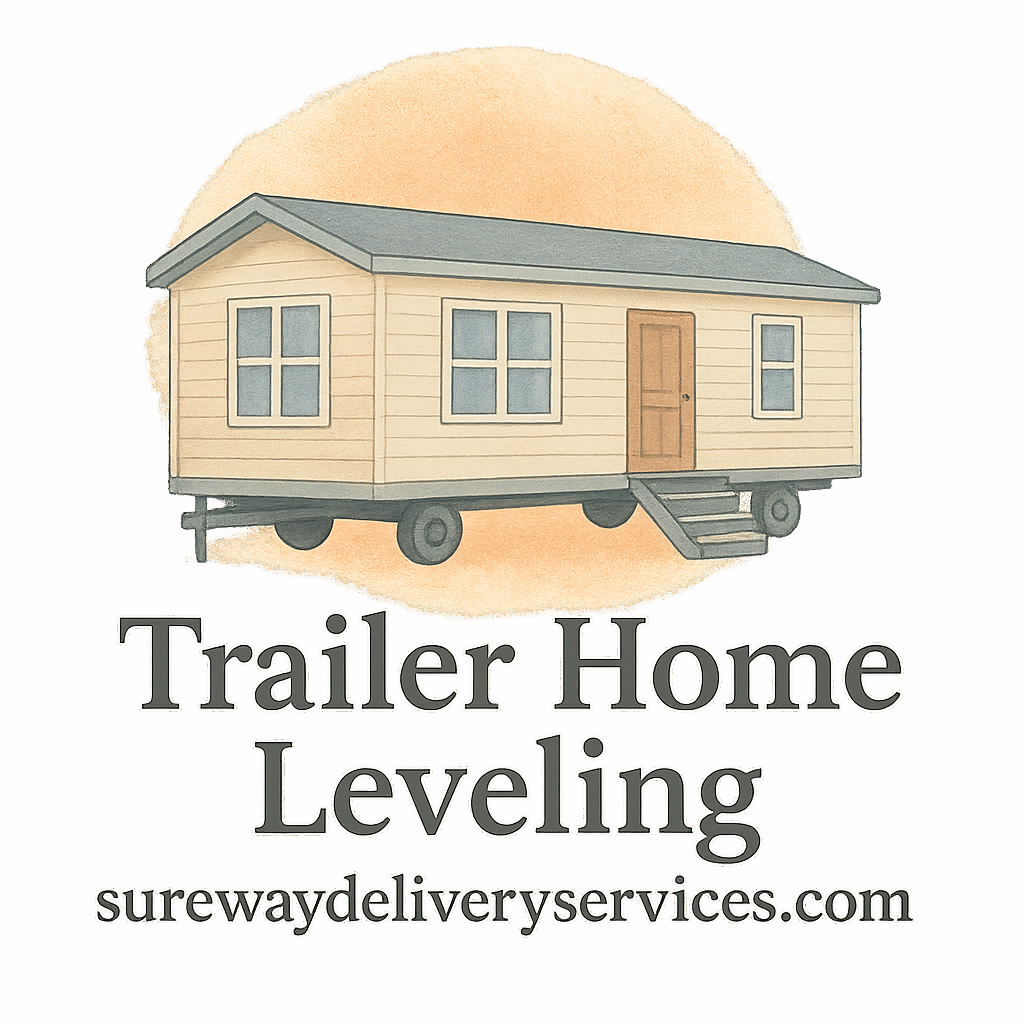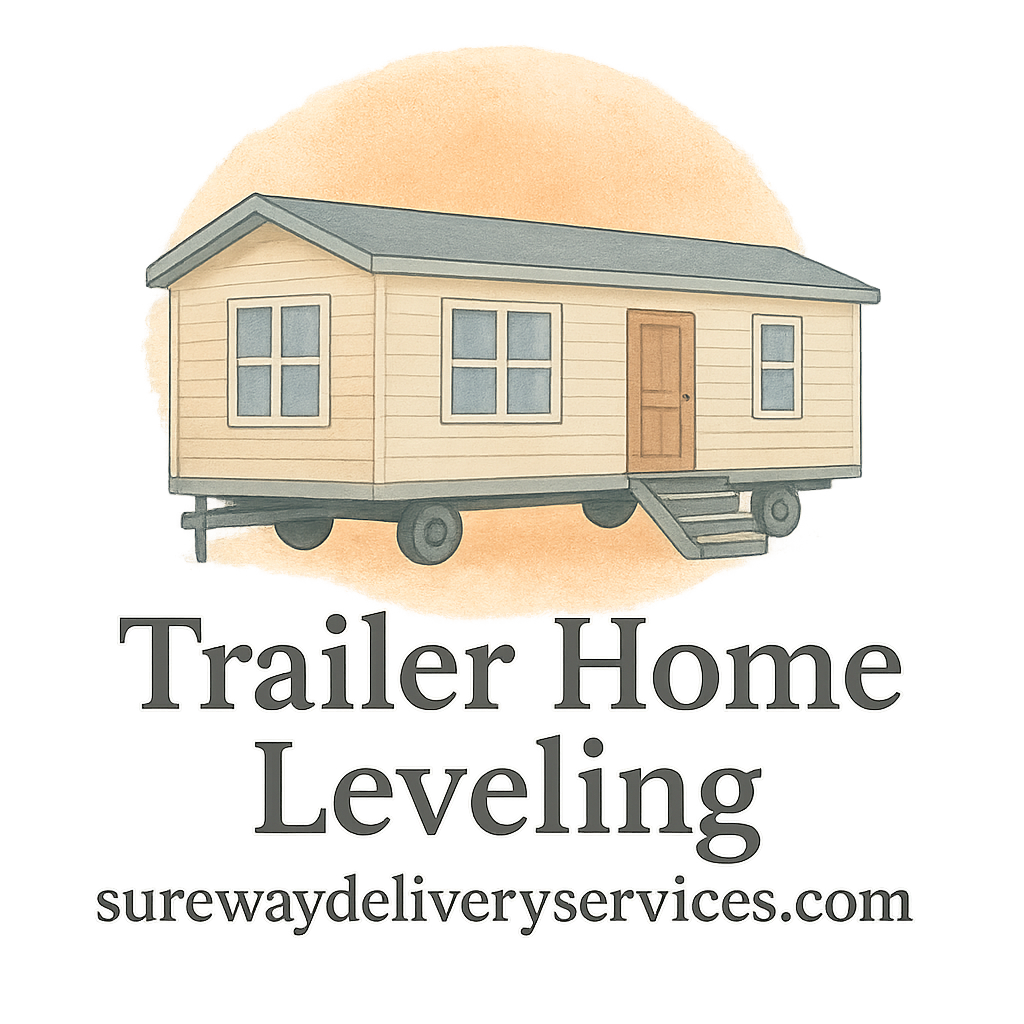Introduction
Ever wonder why some homes seem to sit perfectly flat while others tilt just enough to drive you crazy? Well, your home’s foundation might be to blame—or to thank. The foundation type directly influences how your home reacts to soil movement, weather, and, most importantly, leveling efforts. Whether you’re living in a trailer or a traditional house, understanding your foundation is the first step toward long-term stability.
If you’re trying to make sense of the connection between your foundation and home leveling, you’re in the right place. Let’s break down the 9 main foundation types and how each one can make or break your home leveling game.
1. Slab-on-Grade Foundations
What Is a Slab-on-Grade Foundation?
A slab-on-grade foundation is basically a thick concrete slab poured directly on the ground. It’s common in warmer climates because it doesn’t hold up well against freezing and thawing.
How It Affects Home Leveling
Leveling a home with this foundation can be a bit of a headache. Since the slab is one solid piece, cracks and settlement can affect the entire home structure. Repairs often involve foam injection or mudjacking.
Learn more about leveling techniques used for slab foundations.
2. Crawl Space Foundations
Anatomy of a Crawl Space
Crawl spaces elevate the home off the ground with short foundation walls or piers. They offer easy access to plumbing and wiring but come with moisture issues if not ventilated properly.
Leveling Challenges with Crawl Spaces
Crawl spaces are typically easier to level, especially when it comes to trailer homes. You’ll usually use jacks or shims to correct any sloping.
Routine maintenance and inspection is crucial here to catch sagging floors or water damage before it escalates.
3. Basement Foundations
Deep Support and Settlement Issues
Basement foundations offer extra living or storage space and are often built deep into the ground. But that also makes them more prone to settling, which affects your home’s level.
Impact on Home Leveling Costs
Because of the depth and complexity, leveling a home with a basement can be one of the most expensive options. You may need structural support like piers or wall anchors.
For proper cost estimation, check out this guide on cost & budgeting.

4. Pier and Beam Foundations
Flexibility and Leveling Ease
Pier and beam foundations consist of vertical piers supporting horizontal beams. This structure offers easy access underneath the house and makes leveling relatively simple.
Common Signs of Issues
If your floors feel like a rollercoaster, you may have beam or pier movement. Cracked drywall, uneven doors, and squeaky floors are signs to look out for. Don’t ignore these trailer issues!
5. Pile Foundations
Industrial Strength Support
Pile foundations are deep, driven supports used in soft soils or for heavy buildings. They’re more common in commercial or coastal homes.
Leveling Complexities with Piles
The depth and complexity make pile foundation leveling an engineering task. While super stable, when they fail, it’s a major project. Definitely not a DIY situation.
If you’re hiring someone for this, check out how to choose the right service wisely.
6. Mat Foundations (Raft)
Spreading the Load
Mat foundations spread the building’s load over a large area, making them useful in soft soils. Think of it like placing a mattress under your entire home.
Leveling a Mat Foundation Home
If settlement occurs, leveling often involves lifting the entire mat structure. This is costly and tricky, but necessary to restore balance.
Watch for foundation signs like cracked tile or wall separation.
7. Stone Foundations
Old-World Charm, New-Age Problems
You’ll find stone foundations in older homes. They look charming but are vulnerable to moisture and age-related deterioration.
Leveling Stone-Based Structures
Leveling here often requires replacing or reinforcing the stone. The irregular structure can make leveling both labor-intensive and expensive.
Avoid being overcharged by reviewing customer reviews before hiring anyone.
8. Precast Concrete Foundations
Modern, Modular, and Stable
Precast concrete foundations are manufactured off-site and assembled quickly. They’re precise and highly durable.
Home Leveling Considerations
These foundations are generally low maintenance. If leveling is required, it usually means addressing the soil beneath, not the foundation itself.
Explore relevant checklists to stay proactive.
9. Trailer Home Foundations
Skirting, Jacks, and Anchors
Trailer homes sit on steel frames supported by jacks or blocks, sometimes with skirting around the base. Anchoring is critical to prevent shifting.
Why Foundation Type Matters Most Here
Your trailer’s foundation directly impacts leveling frequency, safety, and cost. A weak or aging setup could lead to serious trailer leveling issues.
Be sure to read the introduction to leveling basics before tackling your trailer project.
Factors That Affect Leveling Regardless of Foundation
- Soil Type & Moisture
- Climate Conditions
- Tree Root Intrusion
- Foundation Age
- Quality of Initial Construction
You should plan for annual maintenance and not wait for visible damage.
Foundation Type and Trailer Home Leveling: Why It’s Critical
Each trailer has unique foundation needs. Your leveling approach for a pier system is totally different than one for a block and anchor setup. Visit our trailer details section to dig deeper.
How to Inspect Your Foundation Type
- Look at what’s supporting your house or trailer: Is it a slab, crawl space, or piers?
- Check for cracking, leaning, and moisture.
- Use a level to check floor tilt.
- Hire a trailer service pro if you’re not sure.
Choosing the Right Home Leveling Service
Don’t just Google and pray. Use this checklist:
- Look for certifications and licenses
- Read real customer reviews
- Compare service packages
- Ask about tools used: hydraulic jacks, laser levels, etc. (tools guide here)
Conclusion
Understanding your foundation type is the cornerstone of effective home leveling. Whether you live in a slab-based suburban home or a mobile trailer on jacks, each type brings its own set of perks and pitfalls.
Your home’s health starts from the ground up—literally. Take time to inspect, maintain, and act early. And remember, knowing your foundation isn’t just smart—it’s essential for keeping your home safe, secure, and level.
FAQs
1. What’s the best foundation type for easy home leveling?
Pier and beam foundations are generally the easiest and most flexible for leveling.
2. How often should I check my home’s level?
At least once a year. Try using our checklist for routine inspection.
3. Can trailer homes be leveled multiple times?
Yes, but the frequency depends on the foundation type and local soil conditions. Learn more here.
4. How much does home leveling usually cost?
It varies! Check our detailed cost guide for insights.
5. Do all foundation types require jacks for leveling?
Nope! Jacks are common with trailers and crawl spaces. Others use foam injection, mudjacking, or piers. Read about jack systems.
6. What are early warning signs my house is not level?
Doors that don’t shut, sloping floors, and cracked drywall. These are signs your home might need help.
7. How do I find a good contractor for leveling?
Start with real recommendations and dig into those success stories.


